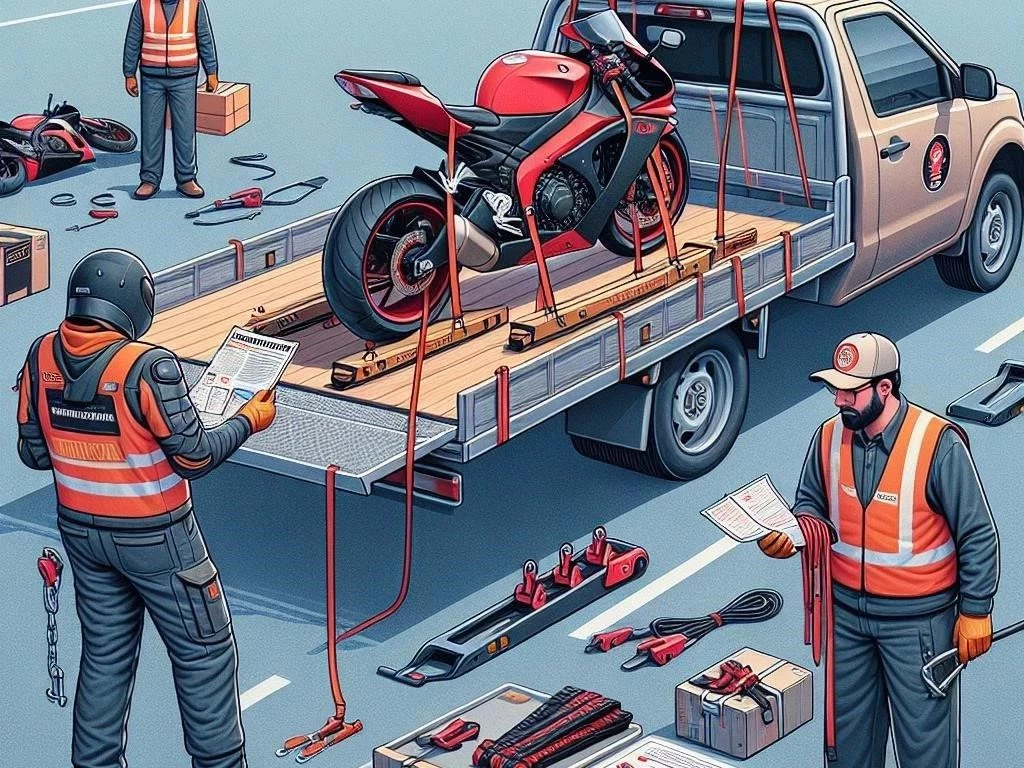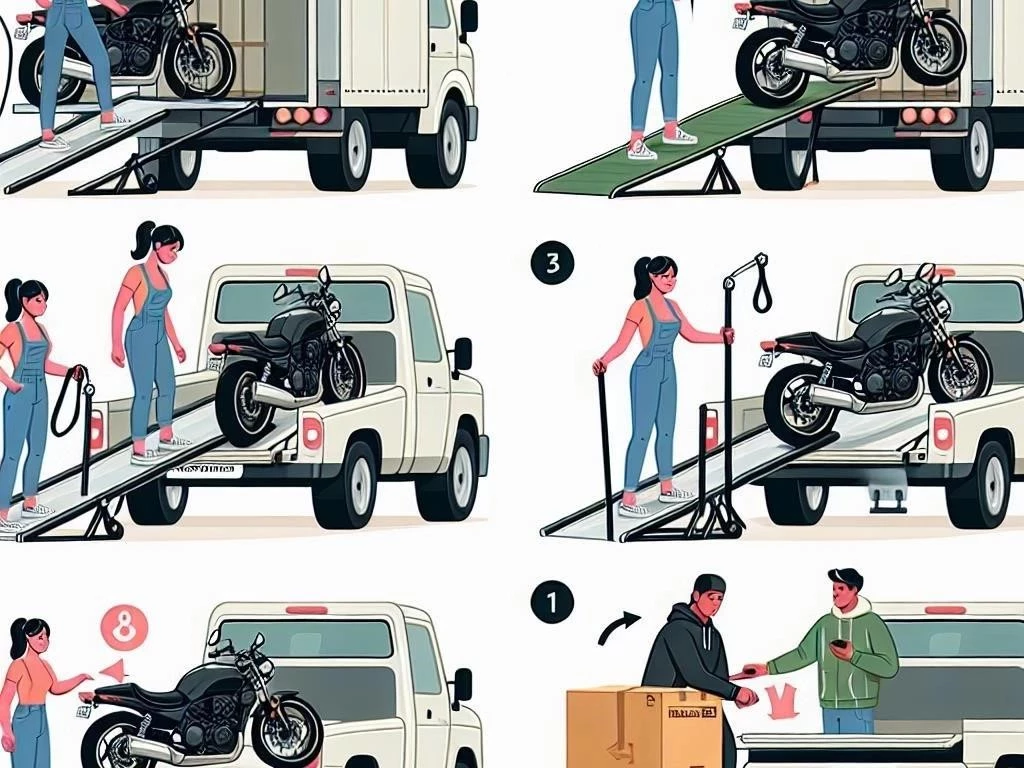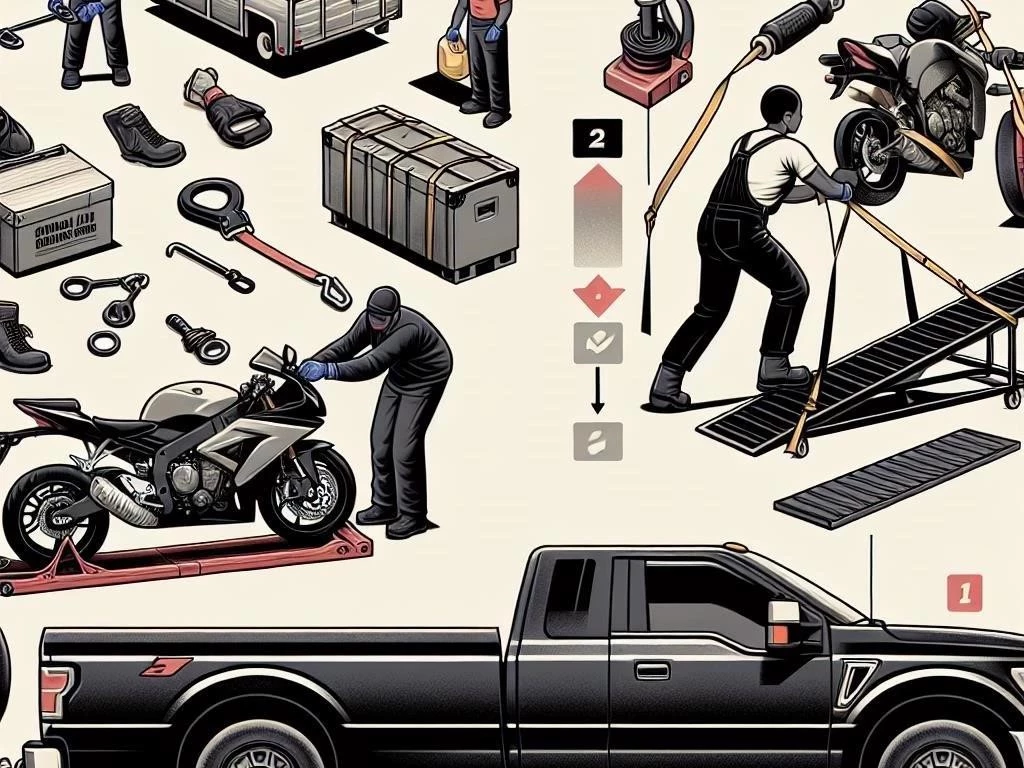
Transporting a motorcycle in a truck requires careful planning, appropriate equipment, and effective techniques to ensure safety and protection during the entire process․
Understanding Motorcycle Transport
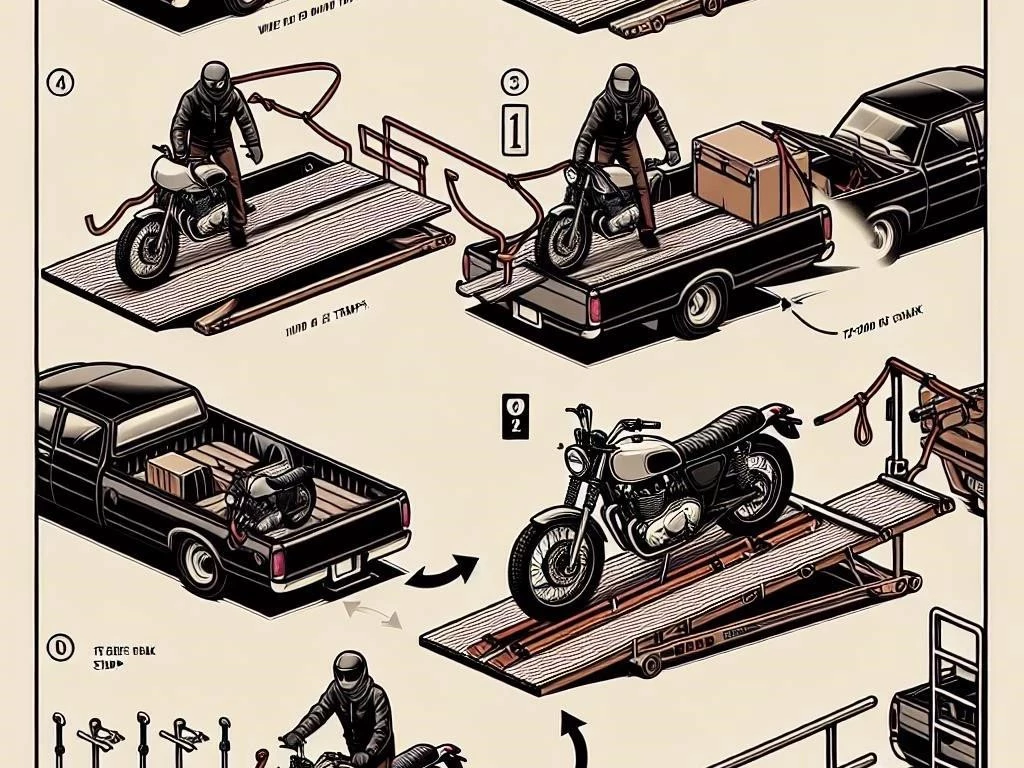
Motorcycle transport involves safely moving a bike from one location to another, typically using a truck․ Understanding the nuances of motorcycle hauling is essential for ensuring both the safety of the motorcycle and the efficiency of the transport process․ Factors such as weight distribution, securing methods, and proper equipment are critical to successful bike transportation․ Whether you’re relocating your motorcycle or preparing for a trip, knowing the best practices and techniques can help prevent damage and enhance overall motorcycle safety during transport․
Choosing the Right Truck for Motorcycle Hauling
Selecting the appropriate truck for motorcycle hauling is crucial for ensuring a secure and stable transport․ Consider the truck’s bed size, weight capacity, and compatibility with motorcycle transport equipment․ A truck with a spacious bed allows for easier loading and unloading, while a sturdy structure supports the weight of the motorcycle effectively․ Additionally, ensure that the truck can accommodate ramps for motorcycles and provide enough room for vehicle loading․ Choosing wisely enhances safety during transport and reduces risks of damage․
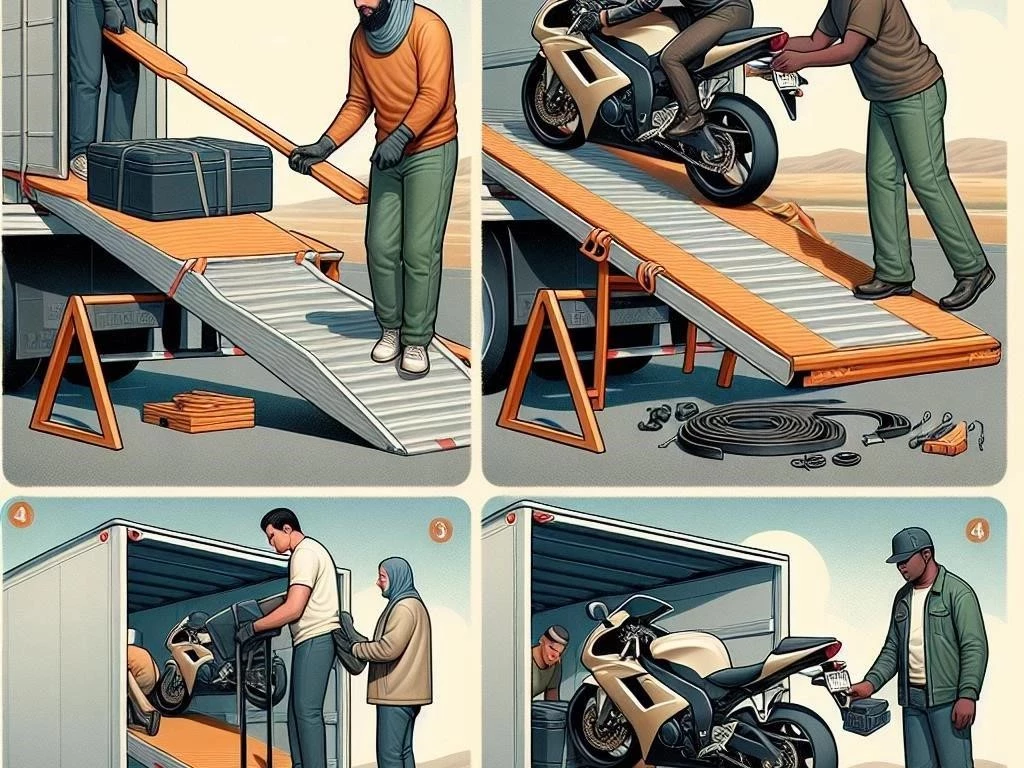
Essential Motorcycle Transport Equipment
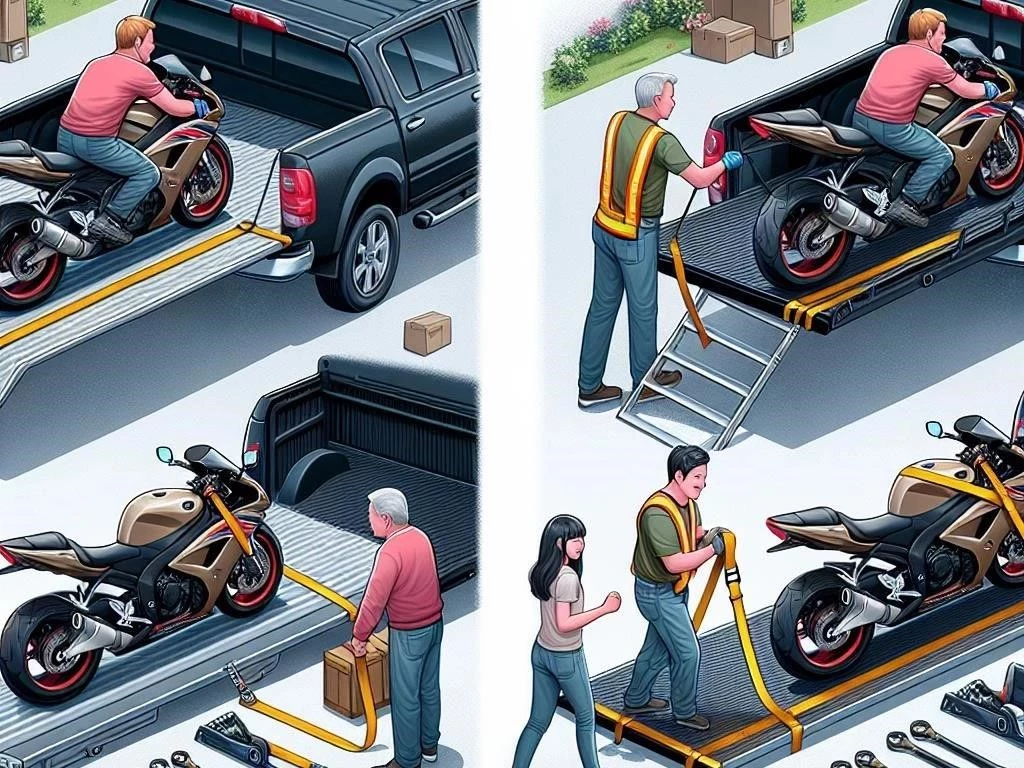
Having the right equipment is essential for safe motorcycle transport․ Key items include sturdy ramps for motorcycles, which facilitate easy loading onto the truck bed․ Additionally, high-quality tie-down straps are necessary to secure the motorcycle firmly during transit, minimizing movement and preventing damage․ Motorcycle accessories such as wheel chocks can also enhance stability․ Investing in reliable transport equipment ensures that your motorcycle remains secure and well-protected throughout the journey, reducing risks associated with vehicle loading and transportation․
3․1 Ramps for Motorcycles
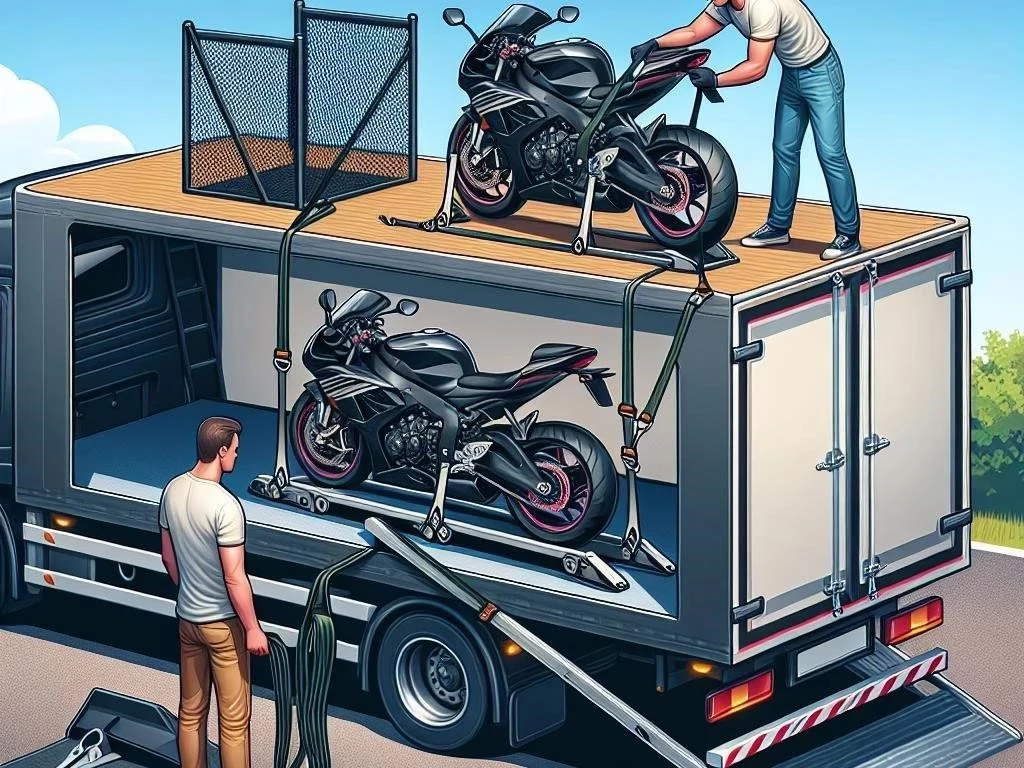
Ramps for motorcycles are a critical component when transporting a bike in a truck․ They provide a safe and stable incline for loading and unloading the motorcycle, minimizing the risk of accidents․ Select ramps that are sturdy, well-constructed, and capable of supporting the motorcycle’s weight․ Additionally, ensure they have non-slip surfaces for enhanced grip during the loading process․ Properly securing the ramps to the truck prevents sliding, ensuring a smooth transition when moving a bike into the truck bed;
3․2 Tie-Down Straps
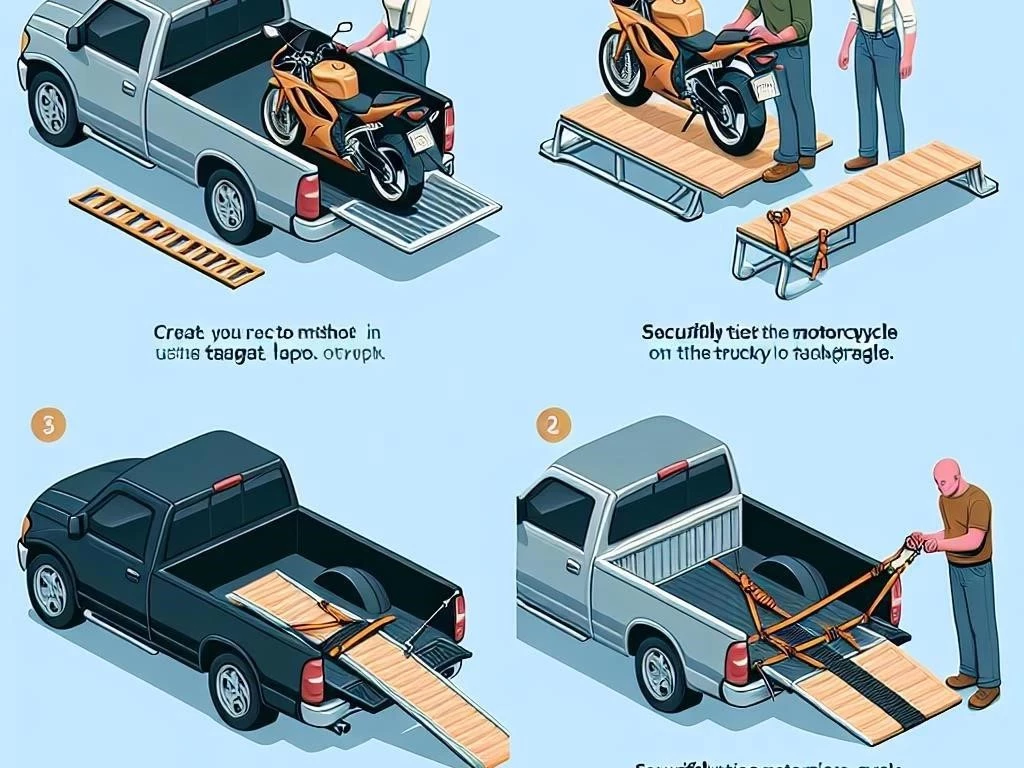
Using high-quality tie-down straps is essential for safely securing your motorcycle during transport․ These straps help to prevent any movement of the bike while on the truck bed, significantly reducing the risk of damage․ Opt for straps that are made from durable materials and feature sturdy buckles for reliable fastening․ It’s important to use proper securing techniques, such as a crisscross pattern, to distribute tension evenly․ This ensures effective motorcycle safety and stability throughout the entire transport journey․
3․3 Motorcycle Accessories for Safe Transport
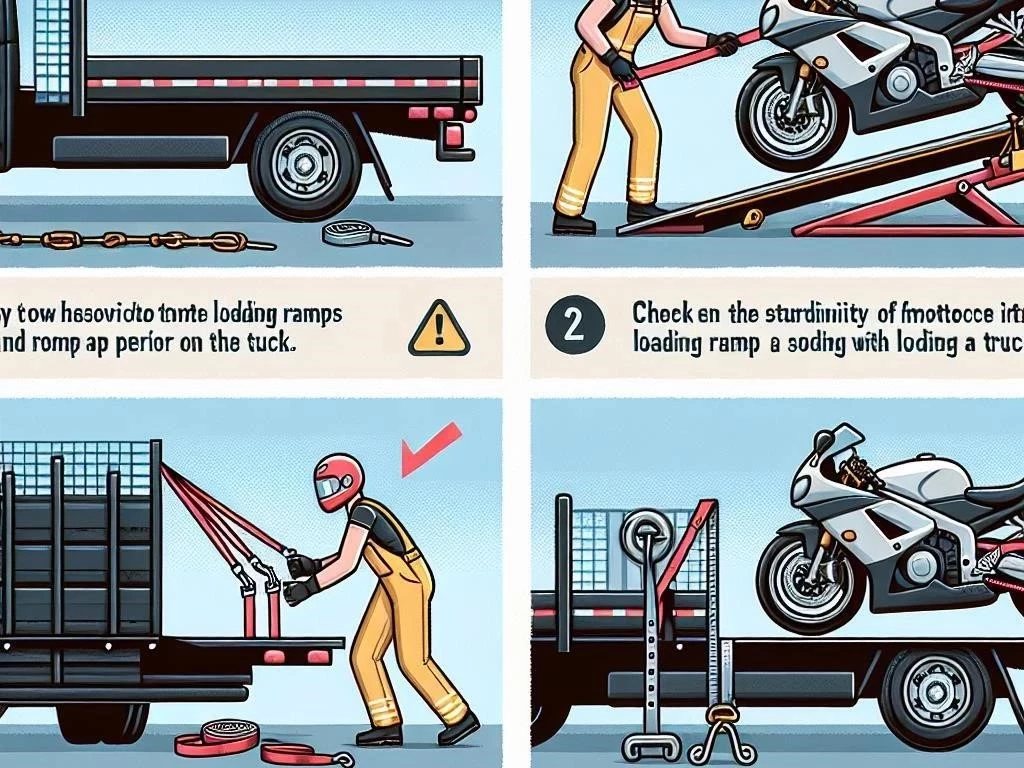
Utilizing the right motorcycle accessories enhances safety during transport․ Essential items include wheel chocks, which keep the bike upright and stable while loaded․ Additionally, consider using protective covers to shield the motorcycle from dirt and debris during transit․ Foam or rubber padding can also be applied to vulnerable areas to prevent scratches or damage․ These accessories contribute significantly to motorcycle protection and overall safety, ensuring that your bike remains secure and in optimal condition throughout the journey․
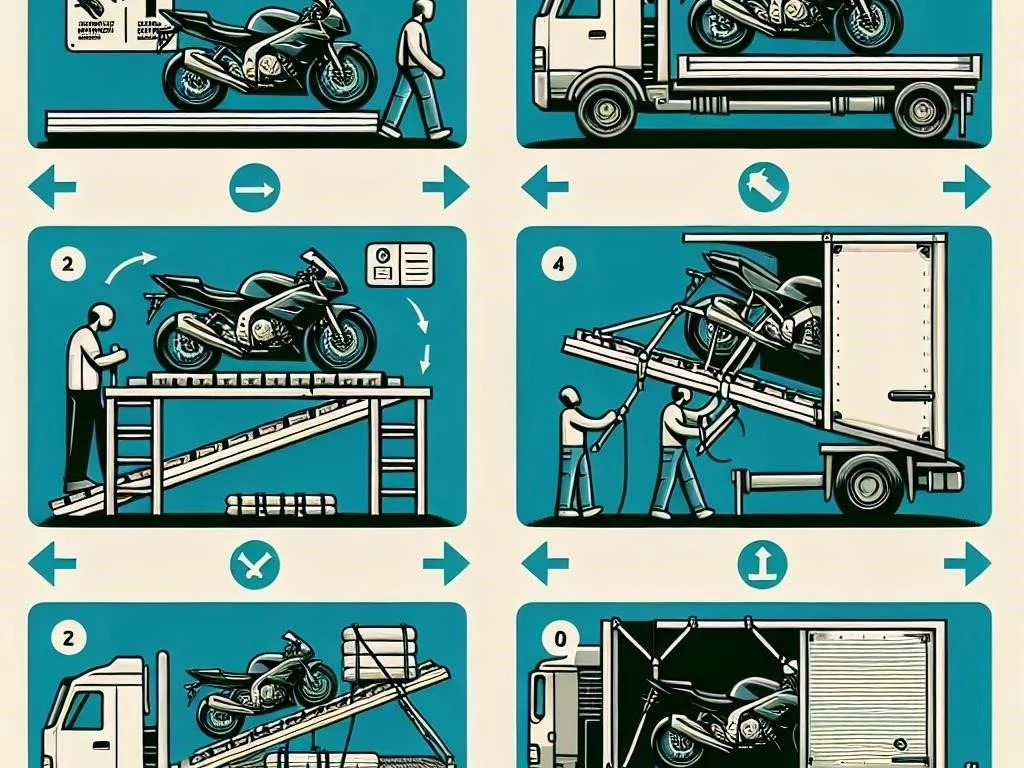
Preparing Your Motorcycle for Truck Loading
Preparing your motorcycle for truck loading is crucial for a smooth transport experience․ Begin by inspecting the motorcycle for any loose parts, ensuring everything is securely fastened․ Check tire pressure and fluid levels, as well as the battery condition, to prevent any issues during transport․ Cleaning the bike removes debris that could scratch the surface while loading․ Additionally, consider taking photos of the motorcycle before loading, providing a reference for post-transport inspection and potential damage assessment․
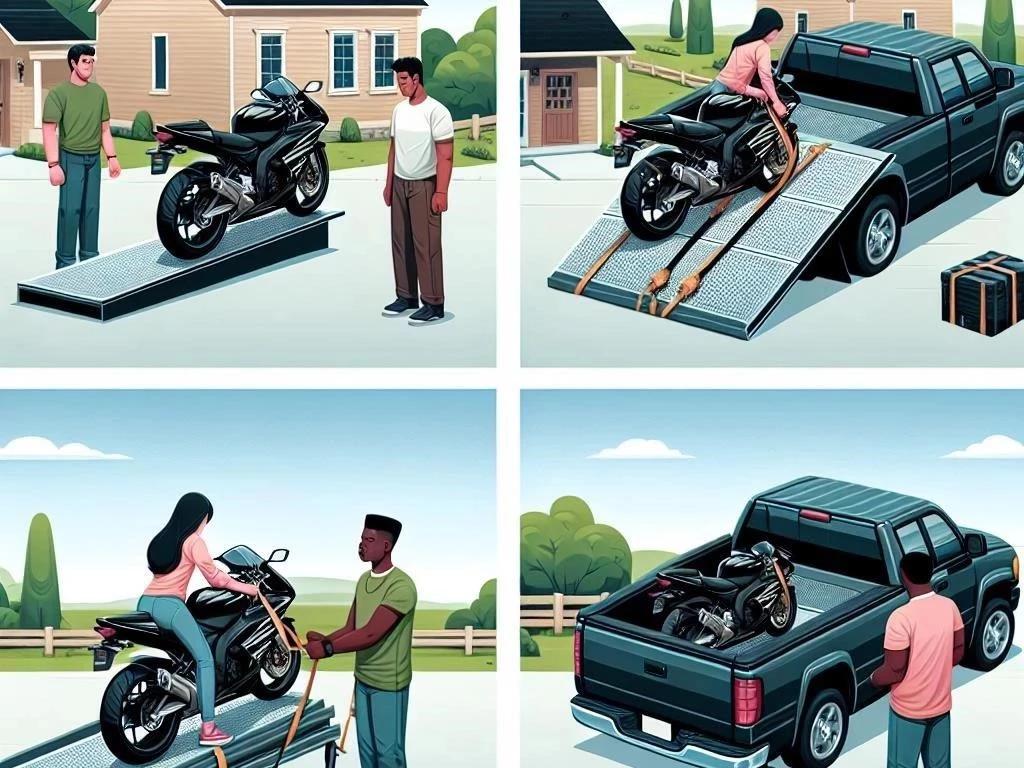
4․1 Inspecting the Motorcycle
Inspecting your motorcycle before transport is essential for ensuring its safety and integrity․ Begin by checking the overall condition, looking for any signs of damage or wear․ Inspect the tires for proper inflation and tread depth, as well as checking the brakes and lights for functionality․ Ensure all loose parts, such as mirrors and accessories, are securely attached․ This thorough inspection not only helps in identifying potential issues but also provides peace of mind during the motorcycle relocation process․
4․2 Cleaning and Securing Loose Parts
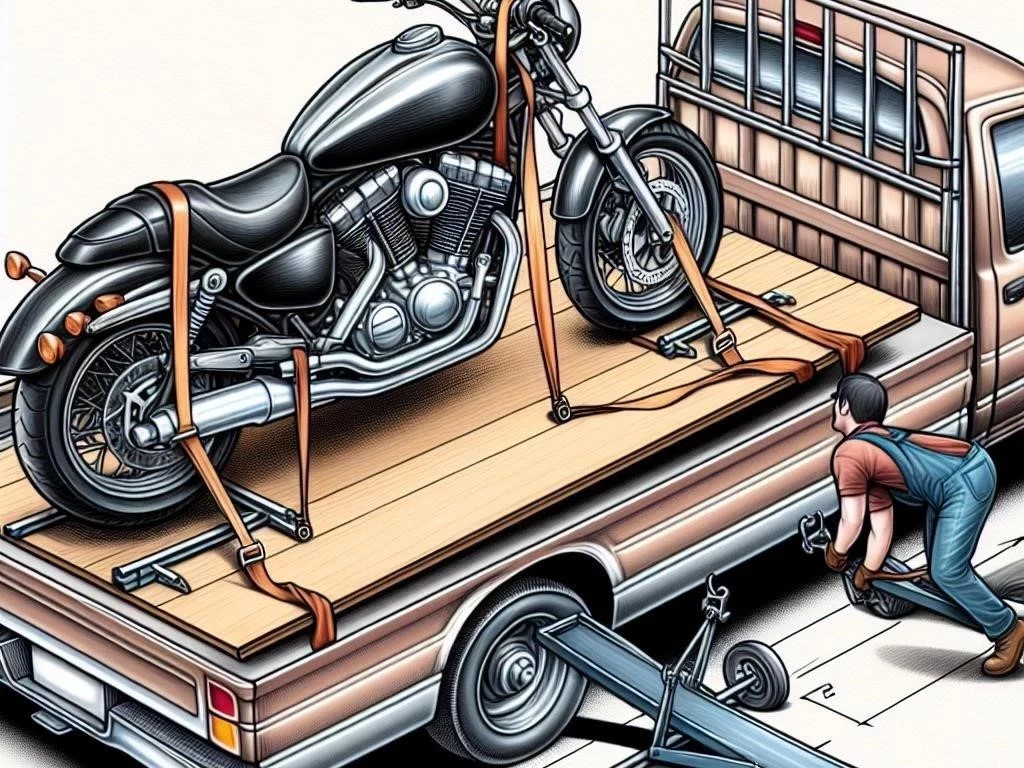
Cleaning your motorcycle before transport is vital for preventing scratches and damage during loading․ Use a gentle cleanser and soft cloth to wipe down the surfaces, removing dirt and grime․ Additionally, focus on securing loose parts, such as mirrors, handles, and any aftermarket accessories․ Check that all bolts and screws are tightened to avoid any shifting during transport․ By ensuring everything is clean and secured, you enhance motorcycle protection and minimize the risk of damage during the truck transportation process․
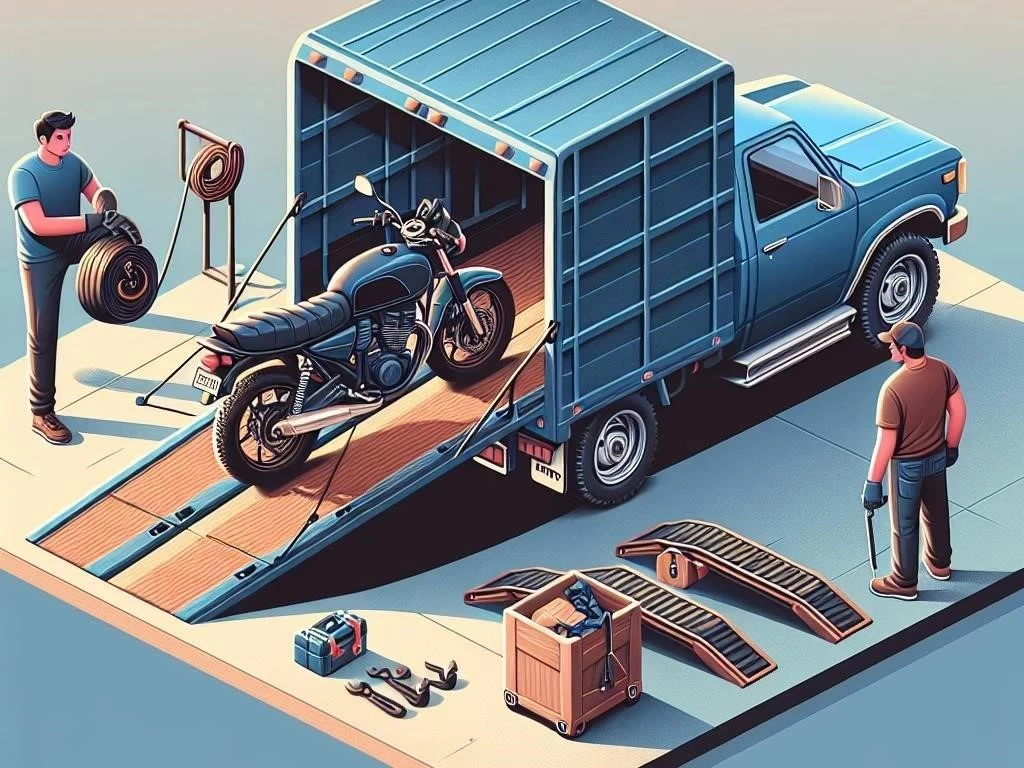
Loading Techniques for Safe Bike Transportation
Utilizing effective loading techniques is essential for safe bike transportation․ Start by positioning the truck on a flat surface, ensuring stability during the loading process․ Use ramps for motorcycles, aligning them securely with the truck bed․ When loading, maintain a steady and controlled speed to prevent accidents․ It’s advisable to have a spotter assisting you, helping guide the motorcycle up the ramp․ This careful approach ensures that your motorcycle is loaded safely and securely, minimizing risks of damage during transport․
5․1 Using Ramps Effectively
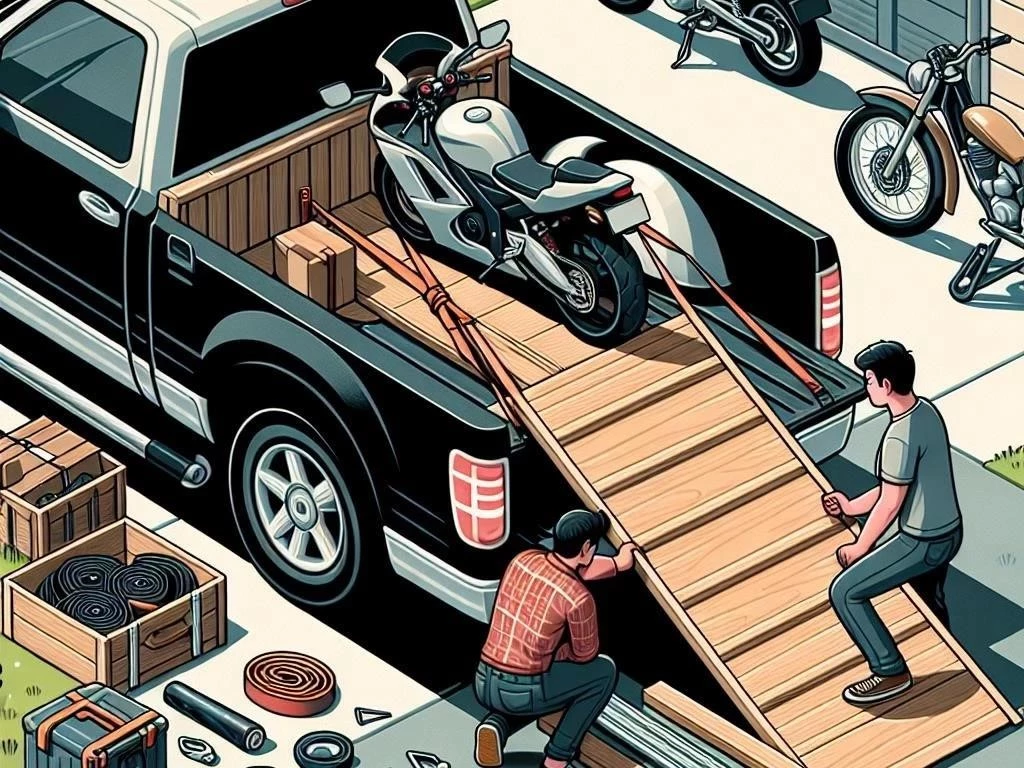
Using ramps effectively is crucial for ensuring a smooth loading experience․ First, select ramps designed specifically for motorcycles, ensuring they can support the bike’s weight․ Securely position the ramps against the truck bed, checking for stability before proceeding․ When loading, walk the motorcycle up the ramp slowly and steadily, keeping your balance centered․ Avoid sudden movements that could cause tipping․ Additionally, consider using a friend as a spotter to assist and provide guidance during the loading process, enhancing safety․
5․2 Positioning the Bike on the Truck Bed
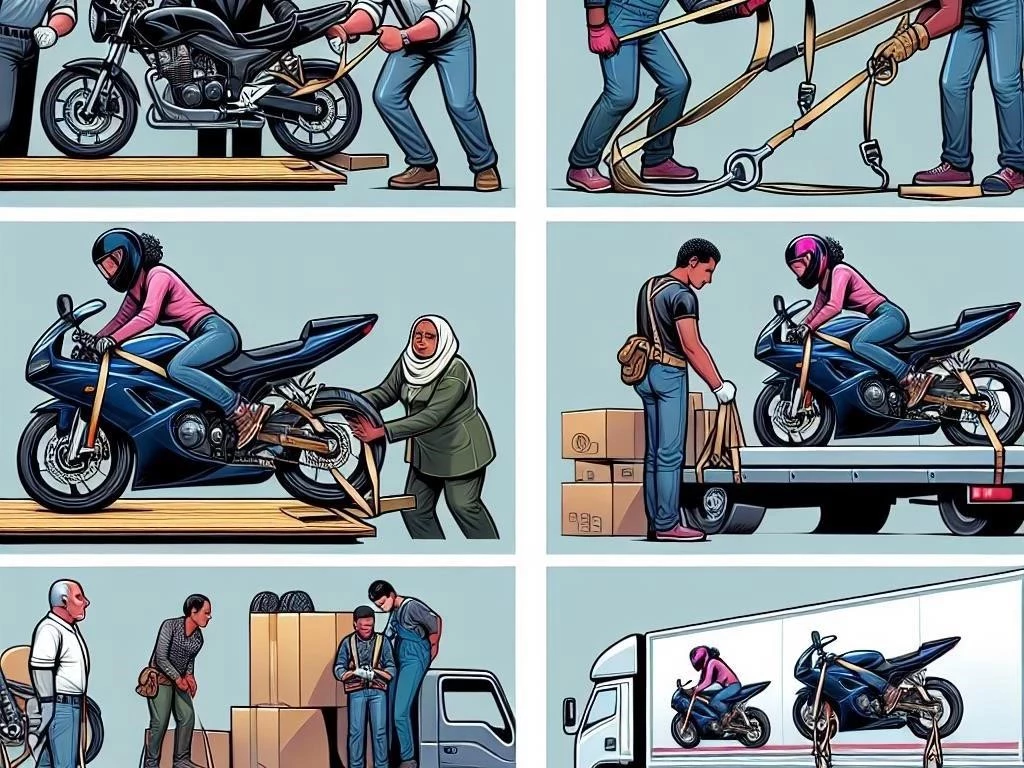
Properly positioning the bike on the truck bed is essential for safe transport․ Aim to place the motorcycle towards the front of the truck bed, which helps with weight distribution and stability․ Ensure that the bike is centered between the wheel wells to prevent any side-to-side movement․ Additionally, adjust the angle of the handlebars to avoid any contact with the truck’s sides․ This careful positioning minimizes the risk of damage during transport and contributes to overall motorcycle safety while on the road․
Securing the Motorcycle During Transport
Securing the motorcycle during transport is vital for preventing damage and ensuring safety․ Begin by using high-quality tie-down straps to fasten the bike securely to the truck bed․ Attach the straps to solid anchor points on the motorcycle and the truck, ensuring they are tight but not overly constricting․ Utilize a crisscross pattern for optimal stability․ Additionally, consider employing wheel chocks to further enhance the motorcycle’s stability․ This comprehensive approach ensures that the bike remains in place throughout the transport journey․
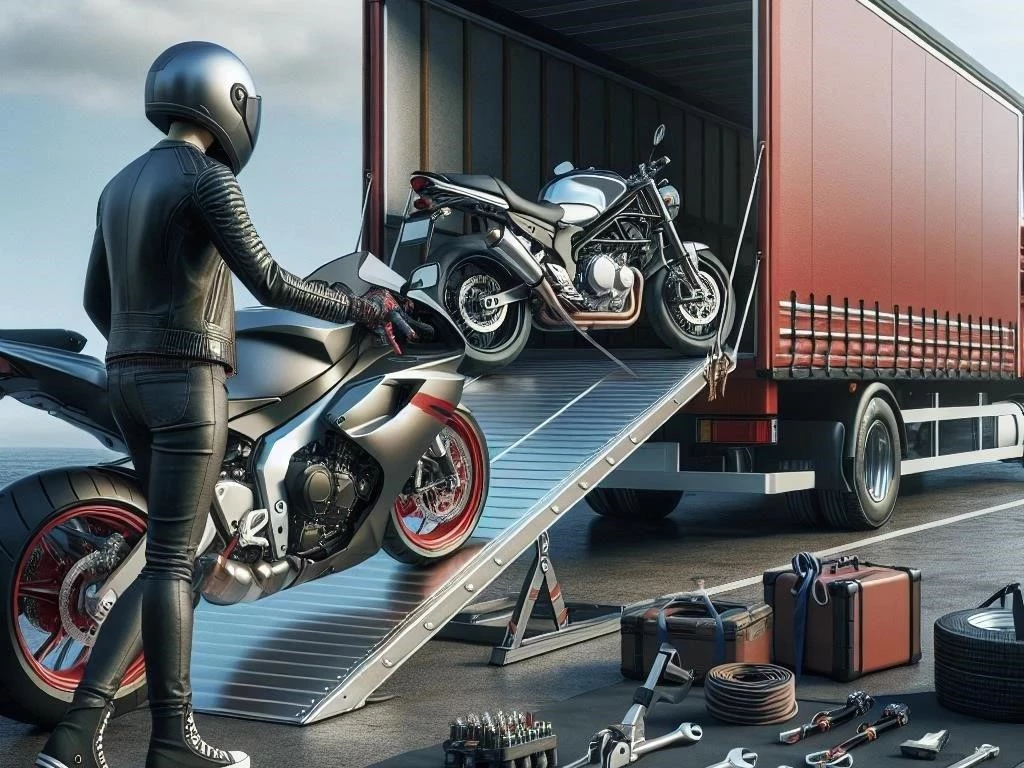
6․1 Best Practices for Bike Securing Methods
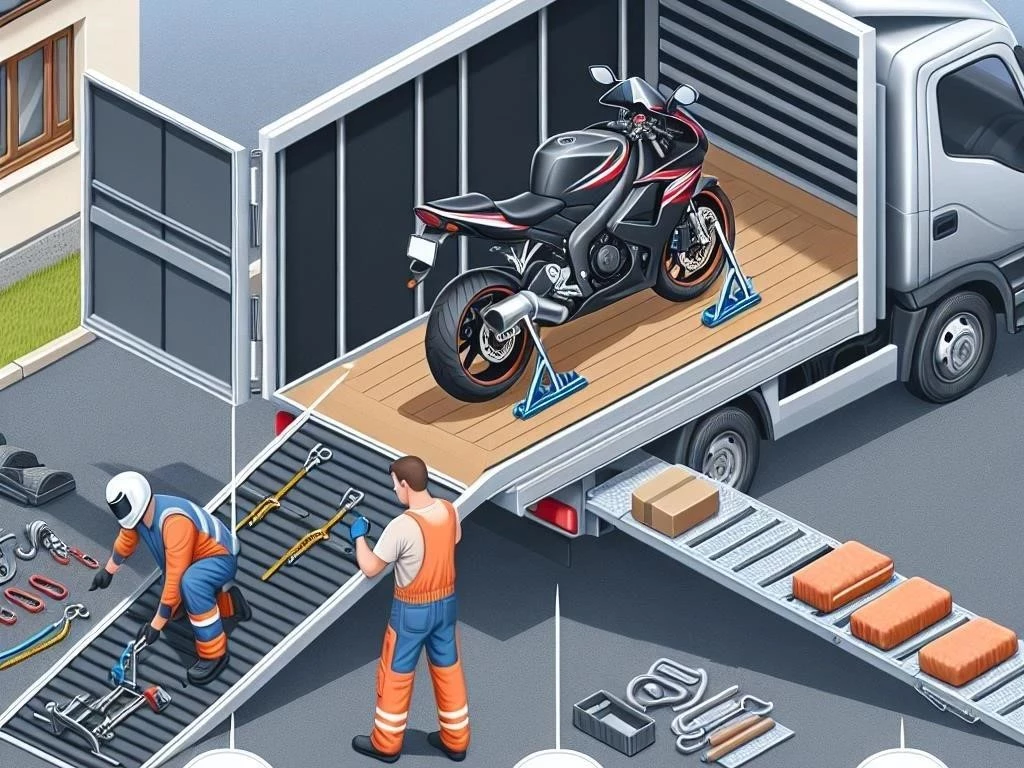
Implementing best practices for bike securing methods is essential for safe transport․ Start by using four tie-down straps, attaching two at the front and two at the rear․ Ensure that the straps are made from durable materials to withstand tension․ Adjust the straps to create a slight downward angle, providing additional stability․ Regularly check the tension during transport, tightening as necessary․ Lastly, avoid over-tightening, as this can cause damage to the motorcycle parts, ensuring effective motorcycle safety throughout the journey․
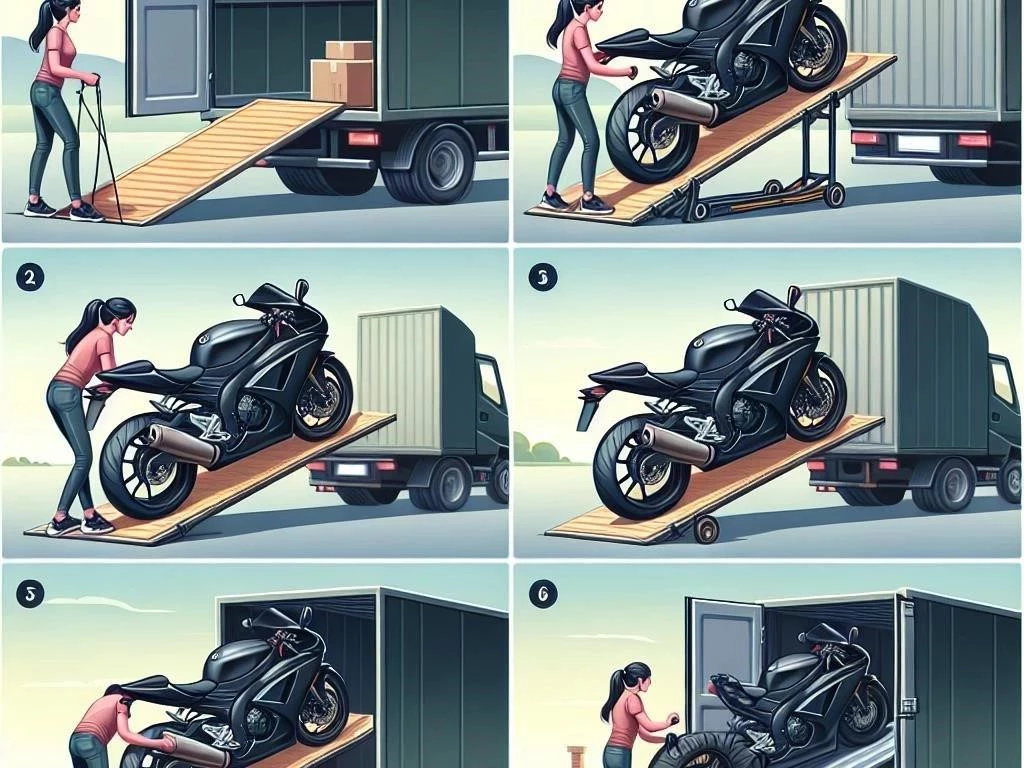
6․2 Motorcycle Safety Tips for Truck Transportation
Adhering to motorcycle safety tips during truck transportation is crucial for protection․ Always double-check that the motorcycle is securely strapped down before starting your journey․ Drive carefully, avoiding sudden stops or sharp turns that could destabilize the bike․ Regularly monitor the motorcycle’s position through the rearview mirror, ensuring it remains secure․ Additionally, keep emergency tools on hand for quick adjustments if necessary․ By following these safety tips, you can ensure a smooth and secure transport experience for your motorcycle․
Hauling Tips for Smooth Motorcycle Relocation
When relocating a motorcycle, employing effective hauling tips ensures a smooth experience․ Begin by planning your route, avoiding rough roads or steep inclines that could impact stability․ Maintain a consistent speed, avoiding sudden acceleration or braking, which can shift the motorcycle’s position․ Regularly check the load at rest stops, ensuring the tie-downs remain secure․ Additionally, communicate with any helpers to coordinate loading and unloading effectively․ By following these hauling tips, you enhance safety and minimize risks during the relocation process․
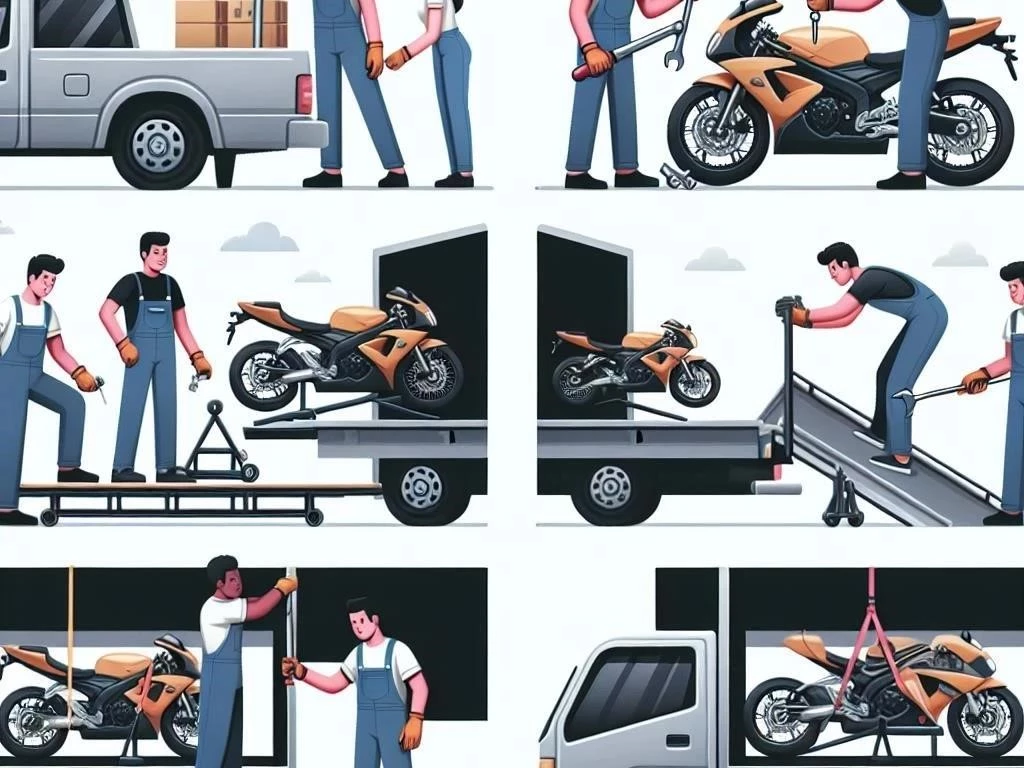
7․1 Driving Considerations
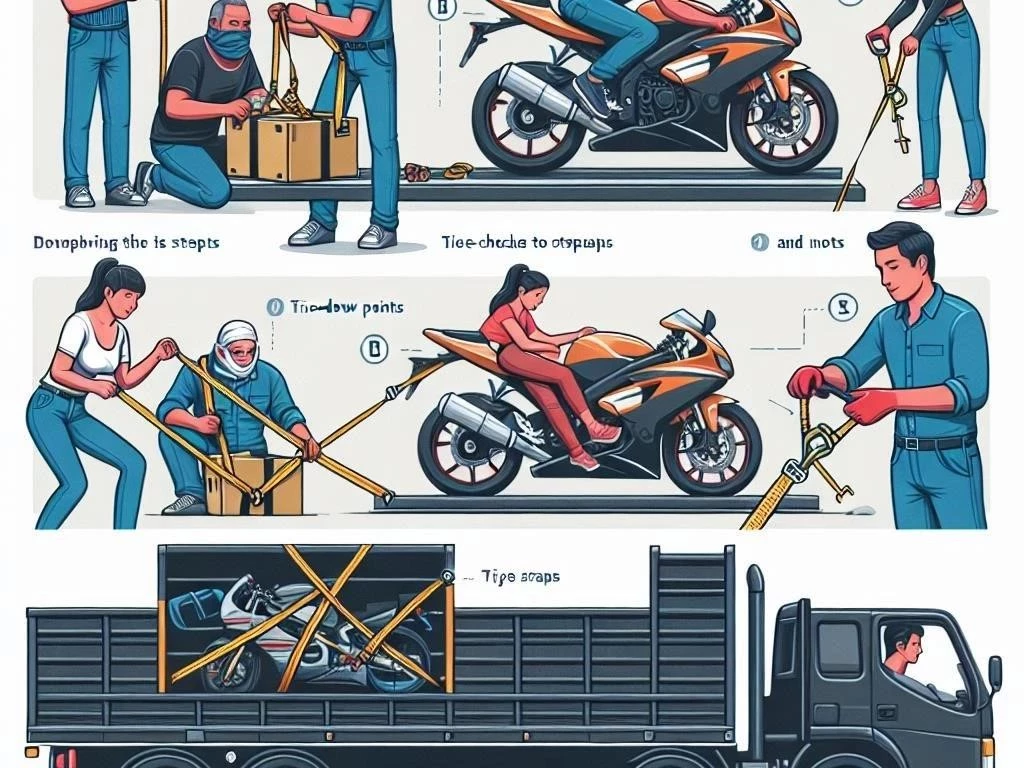
When transporting a motorcycle in a truck, driving considerations are vital for ensuring safety․ Maintain a steady speed, avoiding rapid acceleration or sudden braking that could destabilize the load․ Be mindful of road conditions, steering clear of potholes, bumps, and sharp turns․ Additionally, signal well in advance when changing lanes or making turns, allowing ample time for other drivers to react․ Regularly check your mirrors to monitor the motorcycle’s position, ensuring it remains secure throughout the journey for optimal safety․
7․2 Monitoring the Load During Transport
Monitoring the load during transport is essential for ensuring the motorcycle’s safety․ Regularly check the motorcycle’s position through your rearview mirrors, confirming it remains stable and secure․ Schedule periodic stops to inspect the tie-down straps, adjusting them if necessary to maintain tension․ If you notice any shifting or instability, stop immediately to address the issue․ Maintaining awareness of the load not only protects the motorcycle but also enhances overall safety for you and other road users during your journey․
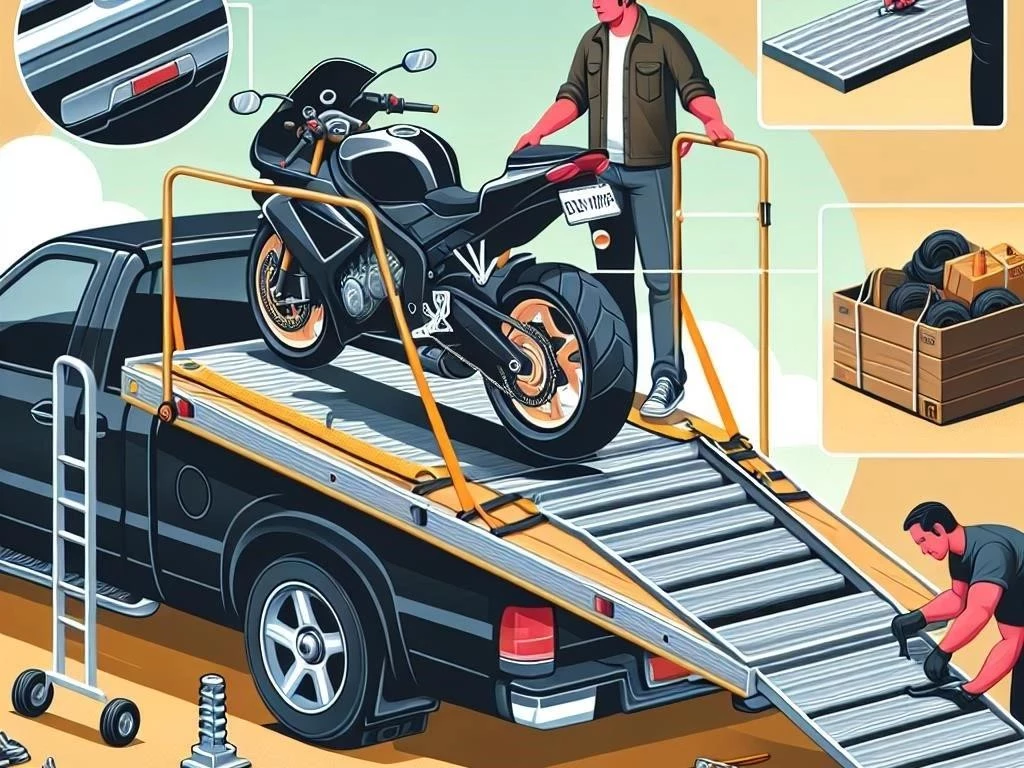
Unloading the Motorcycle Safely
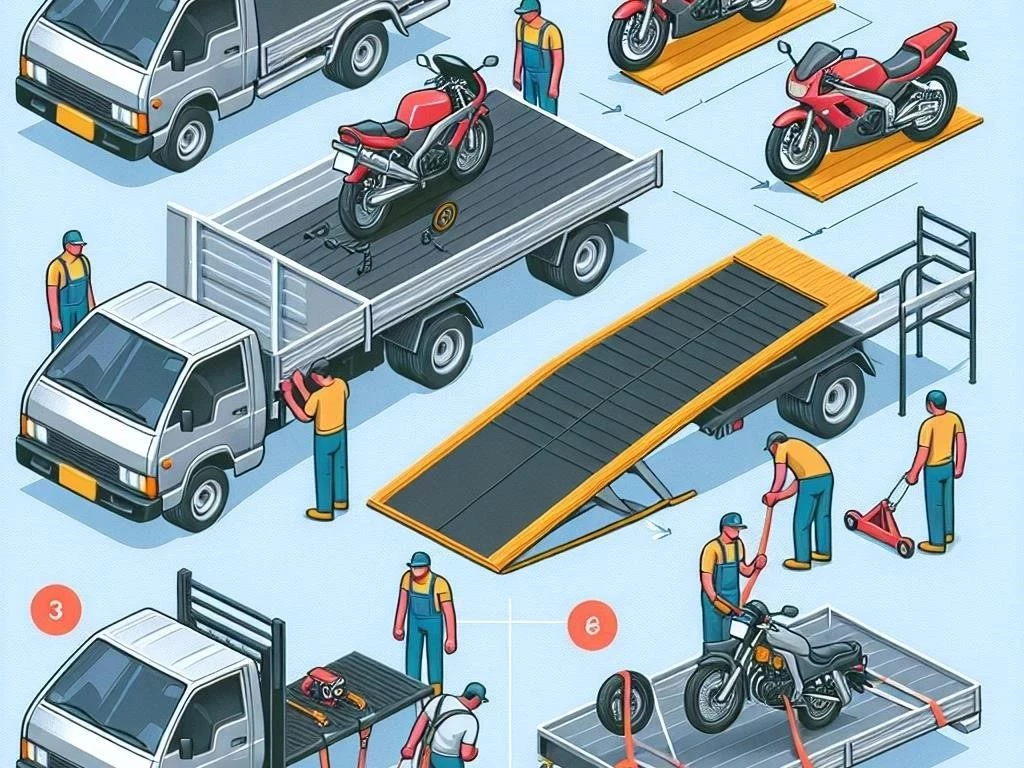
Unloading the motorcycle safely is crucial to prevent accidents and damage․ Begin by ensuring the truck is parked on a flat, stable surface․ Remove any tie-down straps carefully, avoiding abrupt movements that could cause the bike to shift․ Use ramps for motorcycles to facilitate a smooth descent from the truck bed․ When slowly rolling the motorcycle down, maintain control and balance, keeping your feet planted firmly on the ground․ This thoughtful approach ensures a safe unloading process for your motorcycle․
8․1 Techniques for Safe Unloading
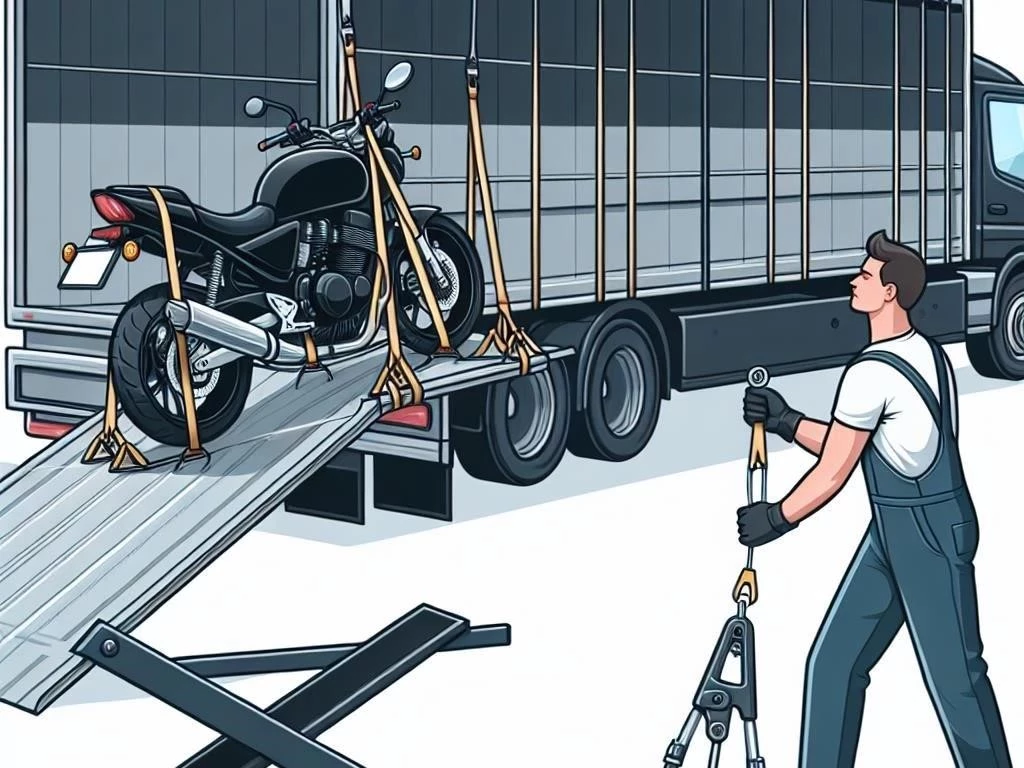
Employing proper techniques for safe unloading is essential to avoid accidents․ Start by ensuring that the ramps for motorcycles are secure and aligned with the truck bed․ Carefully remove the tie-down straps and inspect the motorcycle for stability․ When descending, lean slightly forward to maintain balance while keeping both feet firmly on the ground․ Gradually roll the motorcycle down the ramps, maintaining a steady pace․ Having a spotter can also help guide you, ensuring a smooth and safe unloading process overall․
8․2 Post-Transport Inspection
Conducting a post-transport inspection is crucial for assessing the motorcycle’s condition after unloading․ Begin by examining the exterior for any scratches, dents, or damages that may have occurred during transport․ Check the tire pressure and ensure that the brakes are functioning properly․ Inspect all fluid levels, including oil and coolant, to confirm they are at appropriate levels․ Additionally, examine loose parts to ensure everything is secure․ This thorough inspection helps identify any issues early, ensuring your motorcycle is ready for riding․
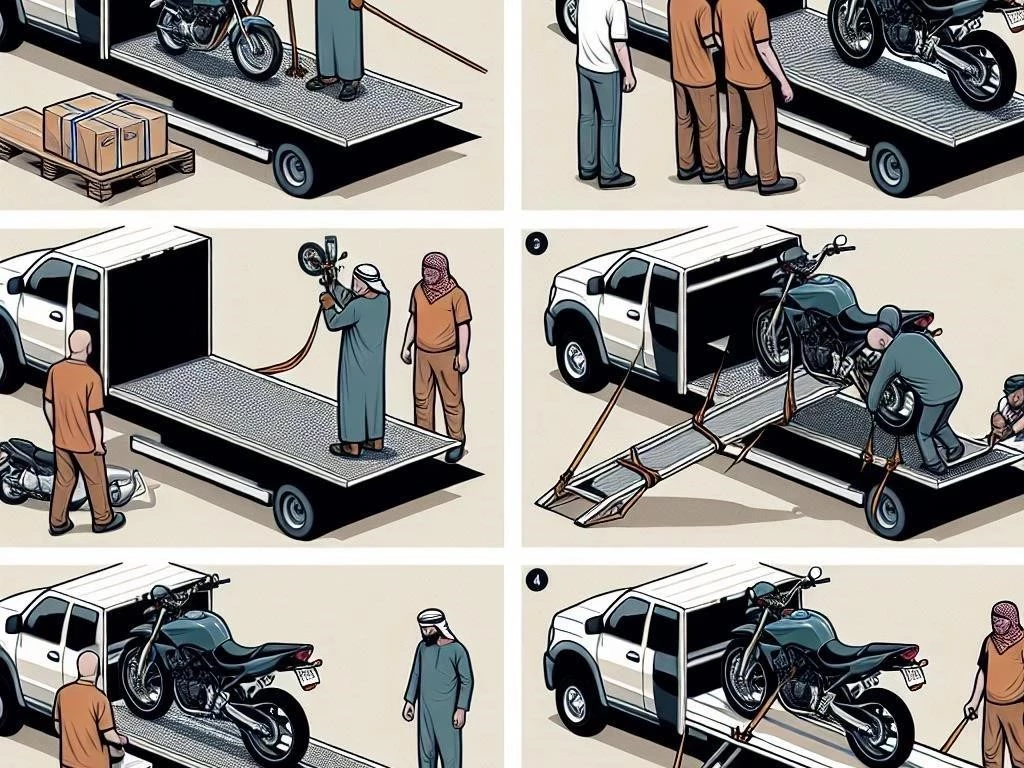
Motorcycle Storage After Transport
Proper motorcycle storage after transport is vital for maintaining its condition․ Begin by cleaning the bike to remove any dirt or debris accumulated during the journey․ Store the motorcycle in a dry, temperature-controlled environment to prevent moisture buildup that can lead to rust․ If possible, use a cover to protect it from dust and scratches․ Additionally, consider using a battery maintainer to keep the battery charged․ Regularly inspecting the motorcycle during storage helps ensure it remains in optimal condition for future rides․
